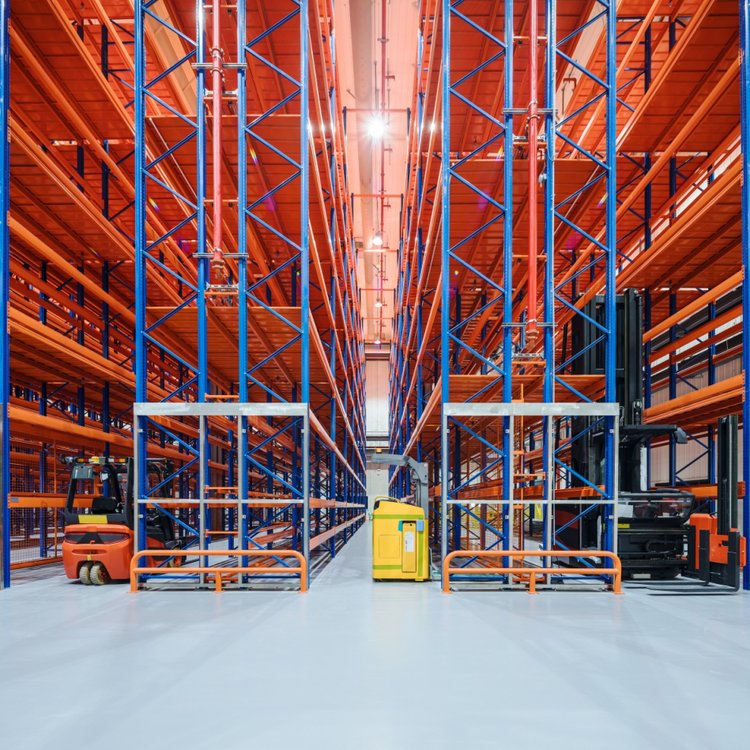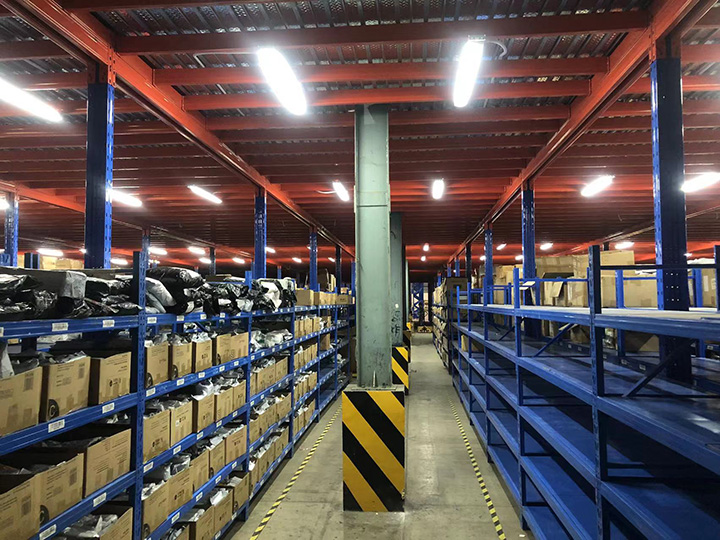In the fast-paced world of logistics and supply chain management, the backbone of any efficient operation is often overlooked: the warehouse racking system. More than just metal shelves, a well-planned warehouse racking system is a strategic asset that directly impacts inventory management, order fulfillment speed, and overall operational safety. From the sturdy warehouse racking guards that protect your investment to the crucial warehouse racking layout that dictates flow, every detail matters. This article explores the core components, costs, and innovative warehouse racking solutions offered by leading warehouse racking manufacturers to help you build a safer, more productive warehouse.

A warehouse racking system is an engineered structure designed to store materials efficiently, maximizing vertical and horizontal space while ensuring easy access to goods. It is far from a one-size-fits-all solution. The choice of system depends on a myriad of factors, including the type of inventory, turnover rates, available space, and the material handling equipment used.
The most common types of warehouse racking include:
Selective Pallet Racking: The most ubiquitous system, offering direct access to every pallet. It's highly versatile and suitable for a wide range of SKUs.
Drive-In/Drive-Thru Racking: A high-density system where forklifts drive directly into the rack structure to place and retrieve pallets. Ideal for storing large quantities of similar products with low SKU counts.
Push-Back Racking: A dynamic system where pallets are stored on nested carts on slightly inclined rails. When a new pallet is pushed in, it pushes the existing pallets back. It offers good density with good selectivity.
Pallet Flow Racking: A high-density, first-in-first-out (FIFO) system that uses gravity. Pallets are loaded on the high end and flow forward on rollers to the picking face.
Cantilever Racking: Designed for long, bulky, or irregularly shaped items like lumber, pipes, or furniture, featuring arms that extend from a central column.
Investing in the right warehouse racking system is the first critical step toward achieving operational excellence. It sets the foundation upon which all other processes are built.
Safety is non-negotiable in a warehouse environment. Among the most common and devastating accidents are forklift collisions with racking uprights. These impacts can cause catastrophic failure, leading to collapse, product damage, severe injury, or even loss of life. This is where warehouse racking guards become indispensable.
Warehouse racking guards, also known as column protectors, upright guards, or rack protectors, are protective barriers installed around the critical structural components of your racking system. Typically made from high-density polyethylene or heavy-duty steel, they are designed to absorb the kinetic energy from an impact.
The benefits of installing warehouse racking guards are clear:
Asset Protection: They shield the structural integrity of your racking system, preventing costly repairs or replacements.
Personnel Safety: By preventing collapses, they create a safer working environment for all employees.
Inventory Protection: They help avoid incidents that could lead to massive product damage.
Cost Savings: The minimal investment in guards is insignificant compared to the potential costs of a major racking collapse.
Integrating warehouse racking guards is a fundamental best practice in any modern warehouse safety protocol.
To maximize the efficiency, safety, and organization of your storage system, a range of warehouse racking accessories is available. These components tailor a standard racking system to your specific operational needs.
Key warehouse racking accessories include:
Wire Mesh Decking: Provides a secure surface for storing smaller items or irregularly shaped packages that might fall through standard beams. It also improves safety by preventing items from falling and helps with fire suppression.
Row Spacers and Cross Braces: Enhance the stability and structural integrity of the racking system, especially for back-to-back rows.
Pallet Supports: Bars that span between beams to provide additional support for pallets that are damaged or unstable.
Column and End-of-Aisle Protectors: The essential warehouse racking guards discussed earlier.
Rack Shims: Used to level racking on uneven floors, ensuring the load is distributed correctly and safely.
Beam Locks and Safety Pins: Secure the beams to the uprights, preventing them from being dislodged by forklift impacts.
Selecting the right warehouse racking accessories can dramatically improve the functionality and longevity of your initial investment.
The warehouse racking cost is a significant capital expenditure, and understanding its components is vital for budgeting and justifying the investment. The cost is not merely the price of the metal; it's a sum of several factors.
Primary factors influencing warehouse racking cost:
System Type and Complexity: A simple selective rack system will cost less per pallet position than a sophisticated automated pallet shuttle system.
Size and Height: The taller the racking and the larger the footprint, the higher the cost. Costs also increase with required seismic ratings for certain geographic regions.
Material and Load Capacity: The gauge of steel and the required weight capacity per beam level directly impact price. Heavier-duty racks cost more.
New vs. Used: Used racking can offer significant savings but comes with risks regarding condition, compatibility, and engineering certifications.
Accessories and Safety Features: Items like wire decking, warehouse racking guards, and special beam locks add to the overall cost but are crucial for safety and functionality.
Installation: Professional installation by certified technicians is highly recommended and represents a separate line item in the budget. It ensures the system is assembled correctly and safely.
Permits and Engineering: Local building permits and the cost of a professional engineer's stamp for the design may be required.
While upfront warehouse racking cost is important, it should be evaluated against the long-term ROI gained through improved storage density, operational efficiency, and safety.

The term warehouse racking solutions encompasses more than just selling a product. It refers to the holistic approach of analyzing a client's unique challenges and providing a tailored storage system that solves them. Leading providers don't just manufacture racks; they engineer answers to logistical problems.
Comprehensive warehouse racking solutions involve:
Consultation and Space Analysis: Experts assess your current inventory, workflow, growth projections, and physical space.
System Design and Engineering: Using advanced software, designers create a optimized warehouse racking layout that is both efficient and structurally sound.
Project Management: Coordinating the entire process from manufacturing to delivery and installation.
Integration: Ensuring the new racking system works seamlessly with existing material handling equipment like forklifts and conveyor systems.
Ongoing Support: Providing maintenance inspections, safety audits, and add-on components as your business evolves.
Seeking out providers who offer full-scale warehouse racking solutions ensures you get a system that is designed for your specific business objectives, not just an off-the-shelf product.
The warehouse racking layout is the strategic arrangement of storage systems, aisles, docks, and workstations within a facility. It is the single most important factor in determining the efficiency of your warehouse operations. A poor layout leads to congested traffic, inefficient picking paths, and reduced productivity.
Key principles of an effective warehouse racking layout include:
ABC Analysis: Position your fastest-moving (A) items in the most accessible areas, closest to the shipping docks. Slower-moving (B and C) items can be stored in higher or less accessible locations.
Aisle Width Optimization: Aisles must be wide enough for your forklifts to maneuver safely but narrow enough to maximize storage density. The type of forklift (e.g., counterbalance vs. narrow-aisle reach truck) dictates the required width.
Flow Design: Establish a logical flow for goods from receiving, to storage, to picking, and finally to shipping. The goal is to minimize cross-traffic and backtracking.
Vertical Space Utilization: Make use of the full clear height of your building. Cube utilization is often more cost-effective than expanding a building's footprint.
Modularity and Scalability: Design the warehouse racking layout with future growth in mind, allowing for relatively easy expansion or reconfiguration.
A well-planned warehouse racking layout acts as a roadmap for your operations, streamlining workflows and drastically reducing labor costs and time.
The market is filled with numerous warehouse racking manufacturers, ranging from global giants to regional specialists. Choosing the right partner is crucial for obtaining a high-quality, safe, and reliable system.
When evaluating warehouse racking manufacturers, consider:
Reputation and Experience: Look for manufacturers with a long track record and positive client testimonials.
Product Quality and Compliance: Ensure their products meet or exceed all relevant industry standards (e.g., RMI - Rack Manufacturers Institute standards in the U.S.).
Engineering Services: Reputable manufacturers employ professional engineers who can design and certify systems for your specific loads and local seismic codes.
Range of Solutions: The best manufacturers offer a full portfolio of systems (selective, drive-in, cantilever, etc.) and warehouse racking accessories to provide a truly customized solution.
Service and Support: Consider their capabilities in installation, maintenance, and ongoing customer support.
Partnering with established and reputable warehouse racking manufacturers provides peace of mind, knowing that the backbone of your operation is built to last and designed for safety.
Your warehouse racking is much more than static storage. It is a dynamic, integral part of your supply chain that influences everything from safety and cost to efficiency and scalability. By understanding the different systems available, prioritizing safety with warehouse racking guards, utilizing key warehouse racking accessories, and carefully considering the warehouse racking cost, you can make an informed decision.
Ultimately, success lies in a holistic approach: designing an intelligent warehouse racking layout and partnering with expert warehouse racking manufacturers who can provide comprehensive warehouse racking solutions. Investing time and resources into optimizing this critical element will yield significant returns in productivity, safety, and profitability for years to come.
 Wechat
Wechat
 Whatsapp
Whatsapp